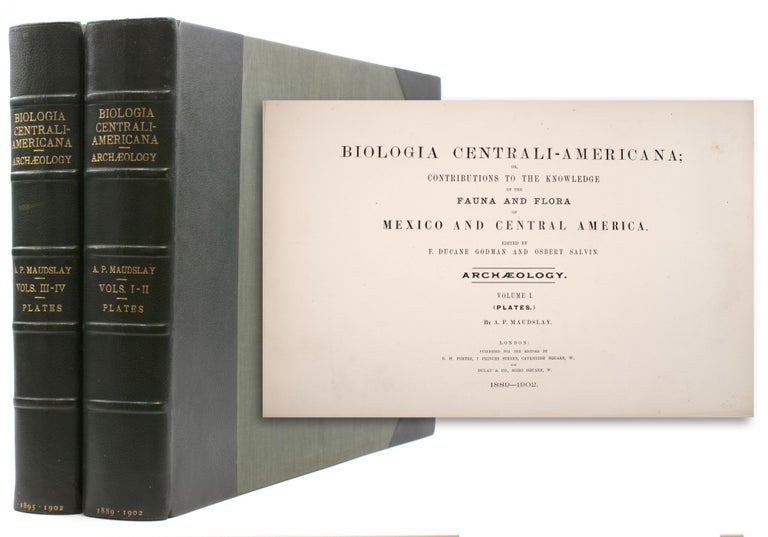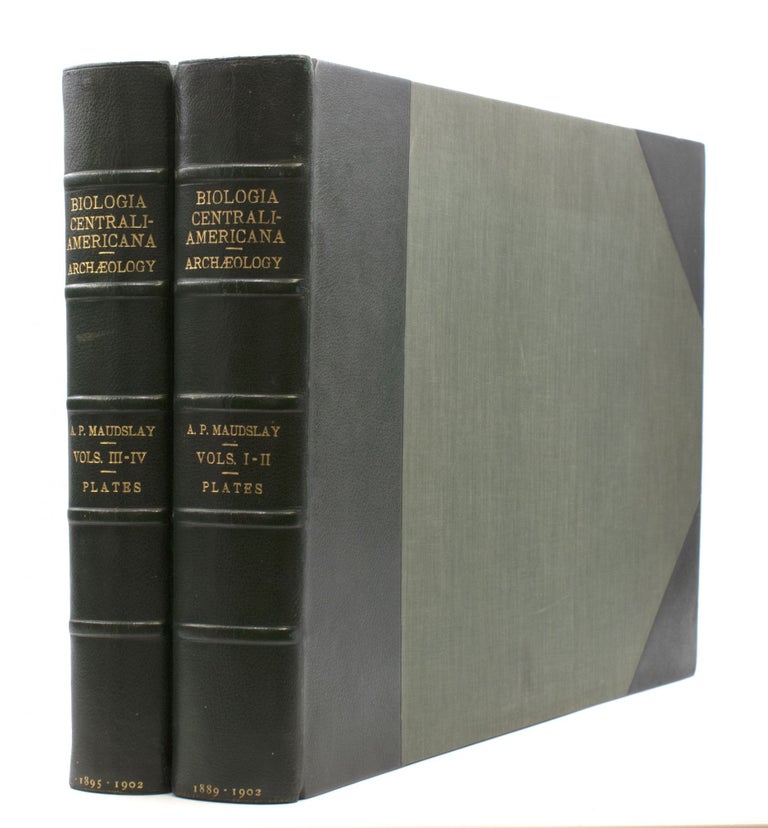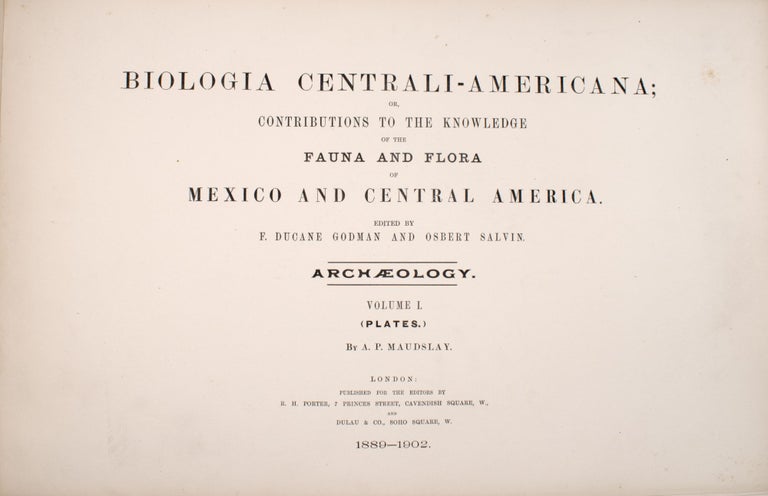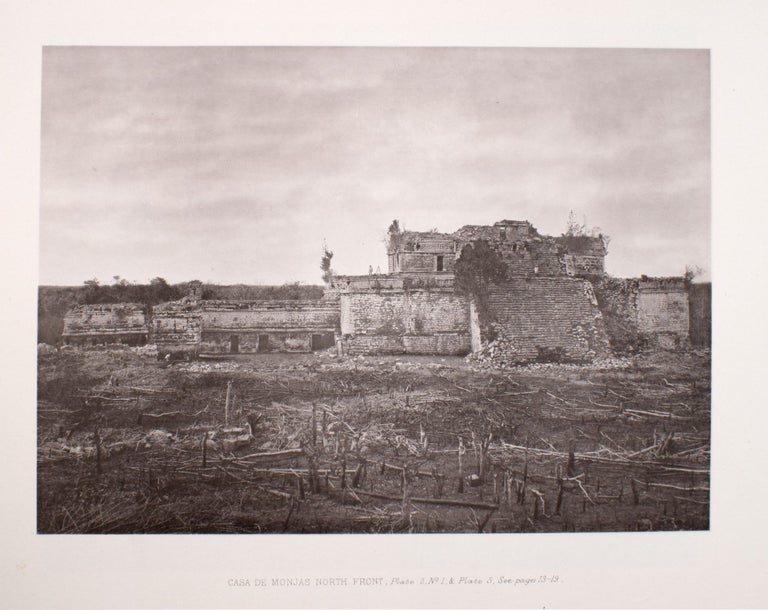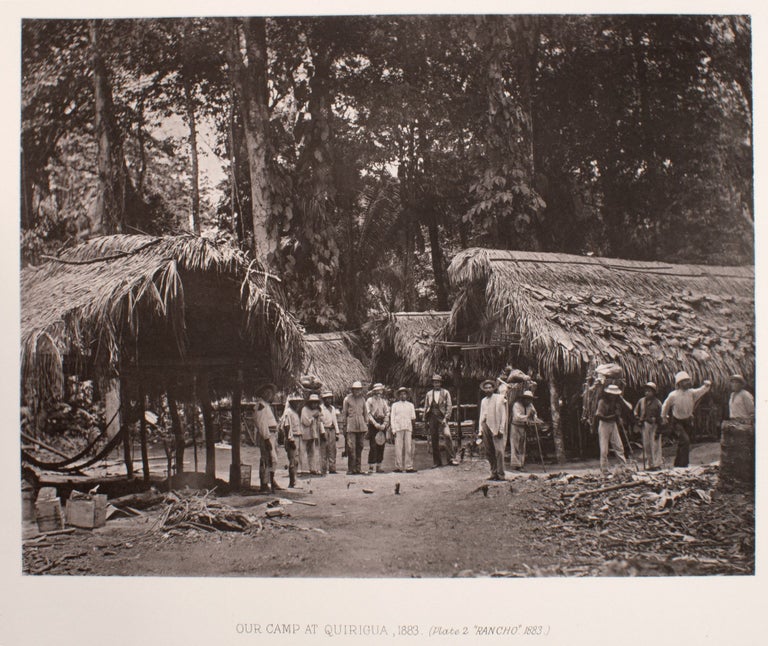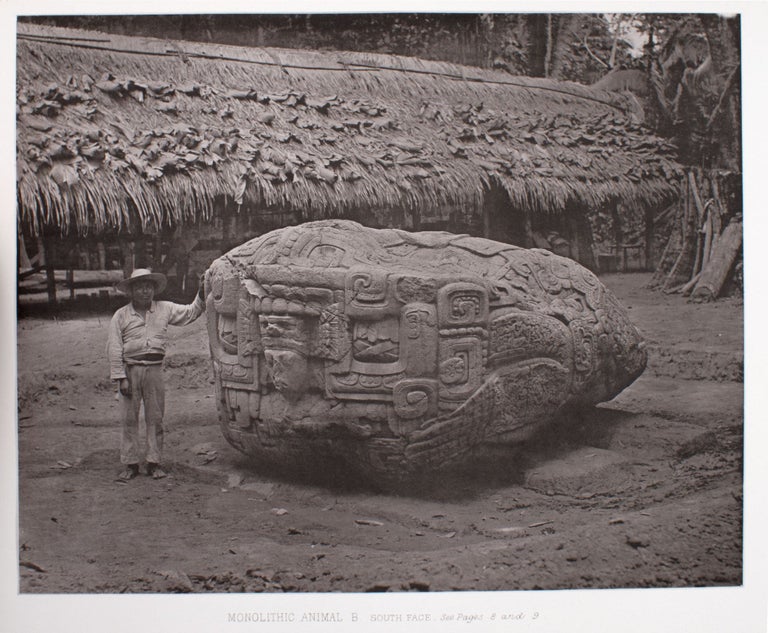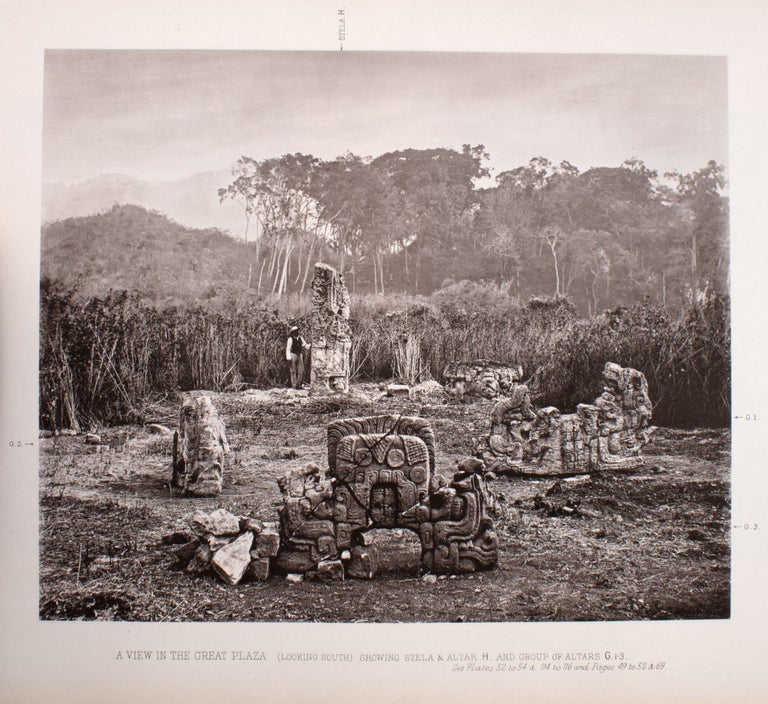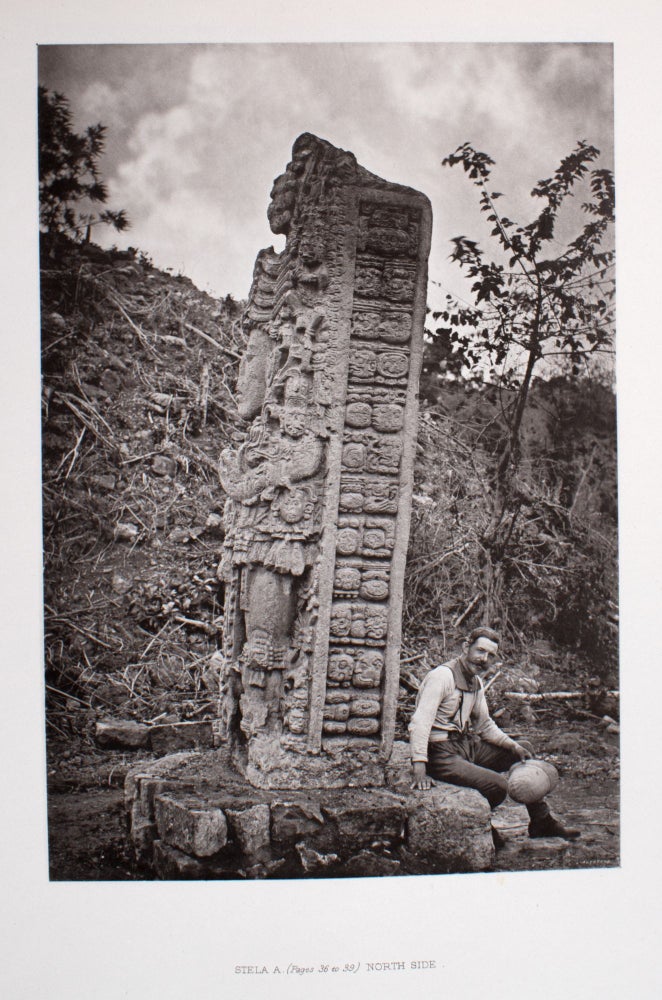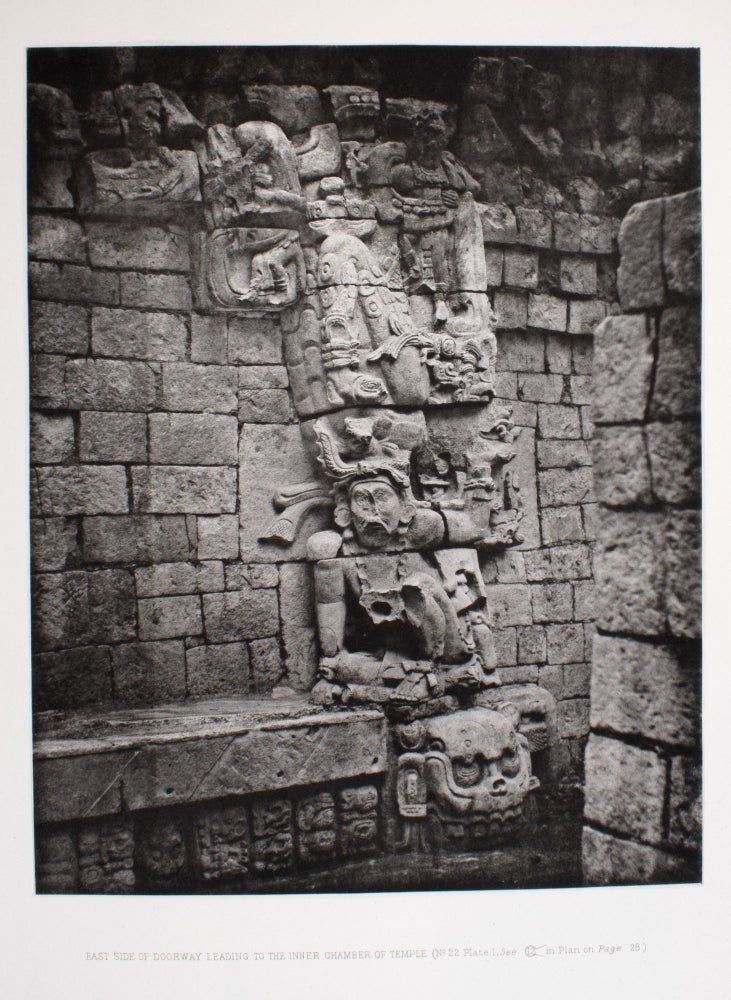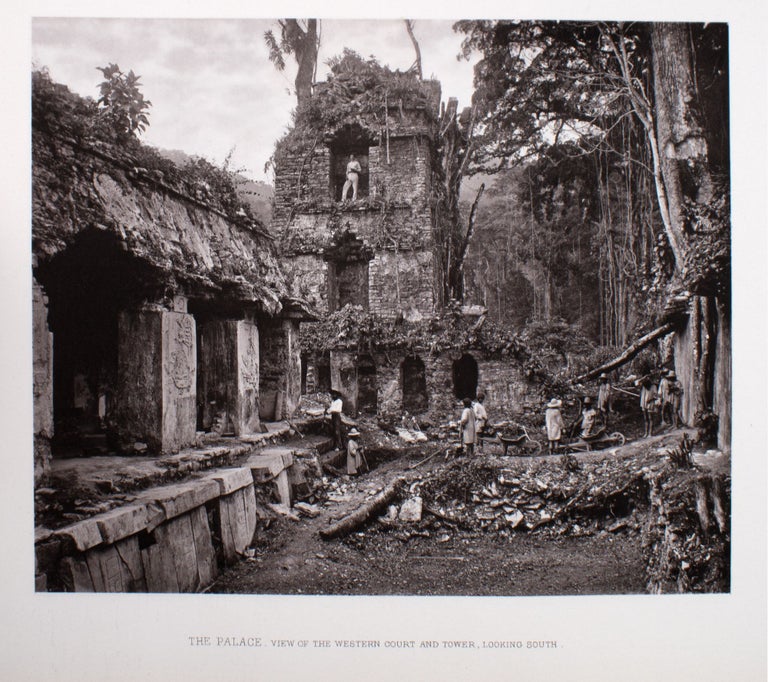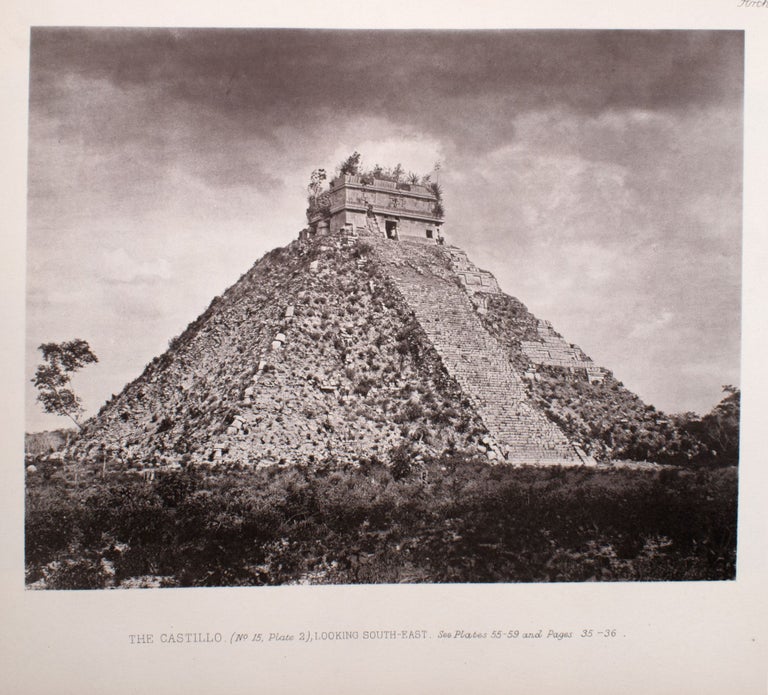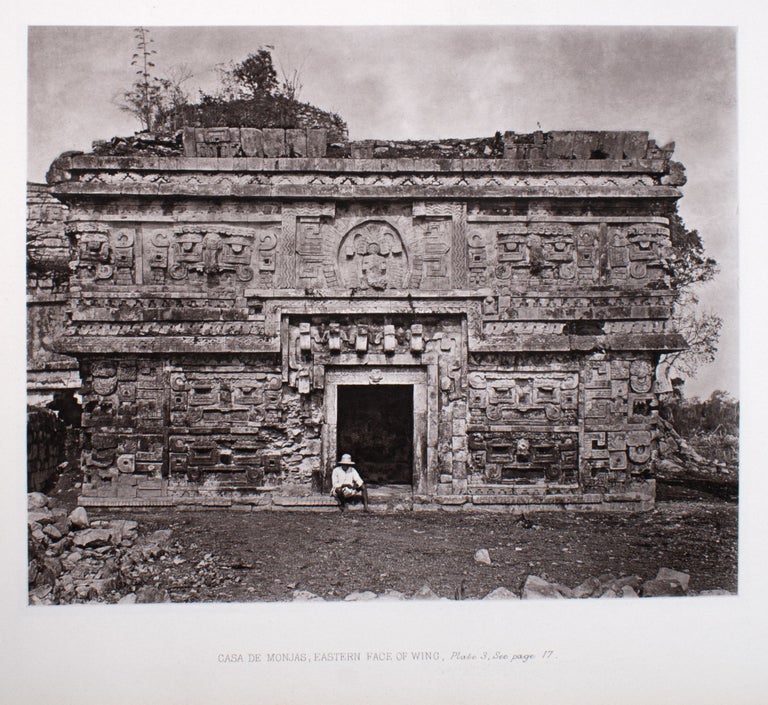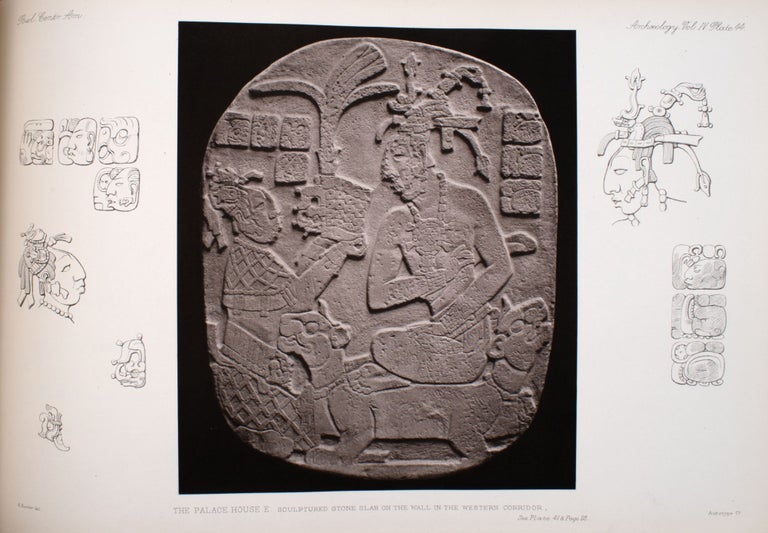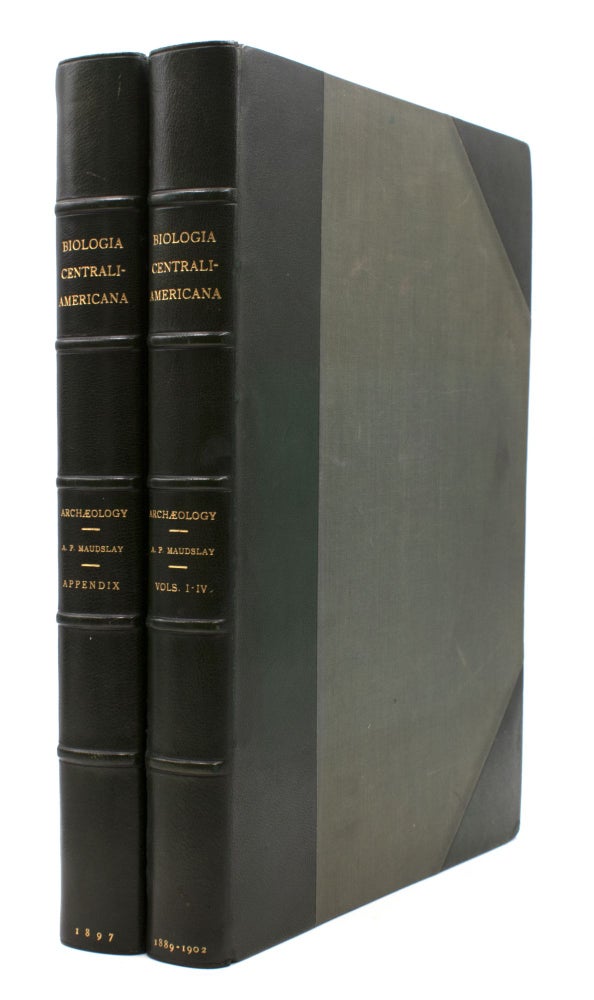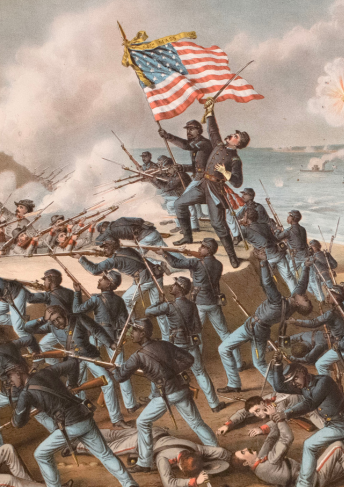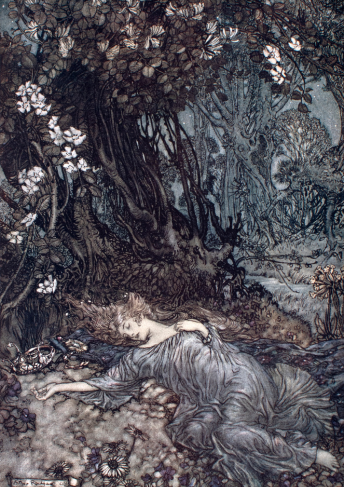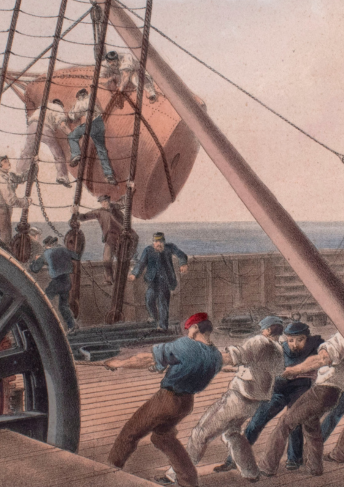The Foundation Work for Mayan Studies
Biologia Centrali-Americana; Contributions to the Knowledge of the Fauna and Flora of Mexico and Central America. Edited by F. Ducane Godman and Osbert Salvin ... Archaeology.
London: R. H. Porter, February 1889 - August 1902.
Price: $35,000.00
About the item
First edition. Text: 2 volumes, comprised of Vols 1-4 in 1, plus the Appendix edited by J.T. Goodman in 1. Photogravure and other illustrations. 69; 47; 50; 38pp., plus the separately-bound Appendix (i.e. part viii). Ten original parts front wrappers bound in. Uncut. The Appendix largely unopened. Plates: 4 volumes in 2. 392 plates, including autotypes and lithographs, a few folding or double-page, a few in color. 4 vols. 4to (text) and oblong folio (plates). The Foundation Work for Mayan Studies. Early half green morocco and cloth covered boards, spines lettered in gilt. Coe, Breaking the Maya Code, pp.110-12; J. Sharer, Robert. "Alfred P. Maudslay: Pioneer Maya Archaeologist" Expedition Magazine 26.1 (1983).
Item #323372
Although the Mayan ruins of Central America were made famous by Stephens's and Catherwood's early explorations, scientific and serious archaeological study began with Alfred Maudslay. A Cambridge polymath who became intrigued by the Mayan ruins in Guatemala in 1880, Maudslay spent two decades exploring Copan, Quirigua, Menché (i.e. Yaxchilan, being the first Westerner to reach it), Chichen Itzá, Tikal, and Palenque, among others.
His impressive work on the Mayan ruins would become part of Godman and Salvin's monumental study Biologia Centrali-Americana. Published over nearly forty years, the Biologia was largely devoted to natural history, attempted to fully document the flora and fauna of the region. The inclusion of Maudslay's archaeological work, which was sold as part of the larger work and issued separately, was a fortunate afterthought.
Maudslay and his team worked with a large wet-plate camera, developing photographs on the spot. He also made extensive casts and took careful measurements. The extraordinary photographic and lithographic plates, the latter largely drawn by Anne Hunter, invaluably document many sites and artifacts which no longer exist or have been extensively plundered. Describing Maudslay as the greatest recorder of Mayan inscriptions, Michael Coe writes: "It is impossible to exaggerate the importance to Maya research of Maudslay's published work. For the first time, Maya epigraphers had large-scale, incredibly accurate illustrations of complete Classic texts..."

